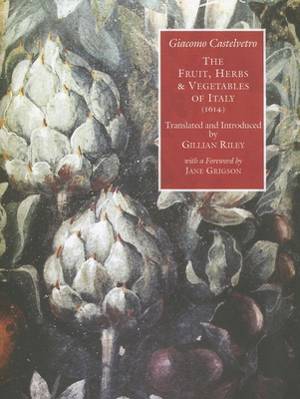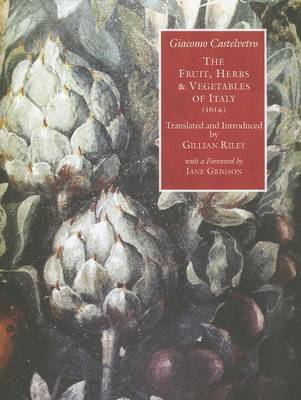
Je cadeautjes zeker op tijd in huis hebben voor de feestdagen? Kom langs in onze winkels en vind het perfecte geschenk!
- Afhalen na 1 uur in een winkel met voorraad
- Gratis thuislevering in België vanaf € 30
- Ruim aanbod met 7 miljoen producten
Je cadeautjes zeker op tijd in huis hebben voor de feestdagen? Kom langs in onze winkels en vind het perfecte geschenk!
- Afhalen na 1 uur in een winkel met voorraad
- Gratis thuislevering in België vanaf € 30
- Ruim aanbod met 7 miljoen producten
Zoeken
€ 22,45
+ 44 punten
Omschrijving
This is a new edition of a classic of the early 17th-century. The book was written by the Italian humanist, Protestant convert and refugee, Giacomo Castelvetro whom, upon coming to England, was horrified by the English preference for large helpings of meat, masses of sugar and very little greenstuff. Italians were good gardeners and had a familiarity with many varieties of vegetable and fruit that were as yet little known in England or, as he noted in his dedication, were being grown only for display rather than for human consumption. Castlevetro circulated his Italian manuscript (Brieve racconto di tutte le radici, di tutte l'herbe, e di tutti di frutti, che crudi o cotte in Italia si mangiano) among his aristocratic supporters and dedicated it to Lucy, Countess of Bedford. Castelvetro takes us through the gardener's year, listing the fruit and vegetables as they come into season, with simple and elegant ways of preparing them. Practical instructions are interspersed with tender vignettes of his life in his native city of Modena. He writes of children learning to swim in the canals of the Brenta, strapped to huge dried pumpkins to keep them afloat; Venetian ladies ogling passers-by from behind screens of verdant beanstalks; sultry German wenches jealously hoarding their grape harvest; and his intimate chats with Scandinavian royalty about the best way to graft pear cuttings and discomfort the Pope. This edition is printed in two colours, has a graceful typography (using the Galliard typeface) and generous layout. This translation has been recognised as being fluent, entertaining and accurate from its first appearance in 1989 and is equipped with a knowledgeable and informative introduction by Gillian Riley as well as a foreword by the food writer Jane Grigson.
Specificaties
Betrokkenen
- Auteur(s):
- Vertaler(s):
- Uitgeverij:
Inhoud
- Aantal bladzijden:
- 152
- Taal:
- Engels
Eigenschappen
- Productcode (EAN):
- 9781903018644
- Verschijningsdatum:
- 4/01/2012
- Uitvoering:
- Paperback
- Formaat:
- Trade paperback (VS)
- Afmetingen:
- 137 mm x 183 mm
- Gewicht:
- 226 g

Alleen bij Standaard Boekhandel
+ 44 punten op je klantenkaart van Standaard Boekhandel
Beoordelingen
We publiceren alleen reviews die voldoen aan de voorwaarden voor reviews. Bekijk onze voorwaarden voor reviews.









